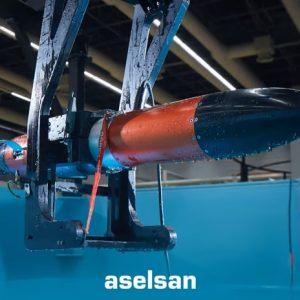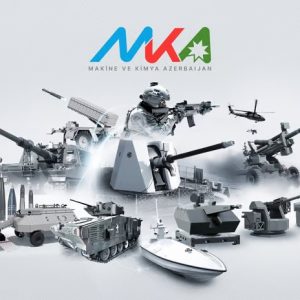Abstract
Over the past month, three analyses from distinct geographies (the United States, the Euro-Atlantic region, and the Indo-Pacific region) have examined how defense diplomacy shapes industrial bases, supply chains, and alliance-managed procurement. The GAO (US) report foregrounds risk stemming from dependence on foreign suppliers and proposes governance tools to improve supply‑chain visibility. The Atlantic Council (Euro‑Atlantic) advances a “production diplomacy” agenda, emphasising co‑production and synchronised procurement within NATO/EU. The ASPI (Indo‑Pacific) corpus, centred on AUKUS, dissects export‑control friction and institutional alignment needed for selective but deep technology cooperation. This article compares their premises, evidence, and policy implications and distils options relevant to Türkiye’s defence ecosystem.
Source Snapshots
1) United States / GAO — Defense Industrial Base: Actions Needed to Address Risks Posed by Dependence on Foreign Suppliers (24 July 2025). The report argues that current DoD data practices offer limited end-to-end visibility on supplier origin, leaving critical sub-tiers opaque and creating bottlenecks in programs such as the F-35. GAO recommends adding origin‑of‑manufacture declarations to contracts, institutionalising supply‑chain mapping, and allocating resources and milestones to de‑risk foreign dependence.
2) Euro‑Atlantic / Atlantic Council — Industrial integration for global defense resilience: Pathways for action (11 April 2025). The paper calls for allied industrial integration via co‑production, technology sharing, and synchronised procurement planning, using NATO and EU (notably EDA) instruments. Its evidence is primarily strategic and policy‑oriented rather than data‑driven, yet it is anchored in recent stressors: ammunition depletion after Russia invades Ukraine and Europe’s reliance on US capacity.
3) Indo‑Pacific / ASPI — AUKUS‑focused analysis (2024–2025). ASPI’s work details how AUKUS can sustain industrial cooperation across Pillar 1 (nuclear‑powered submarines) and Pillar 2 (advanced capabilities: AI/autonomy, cyber, hypersonics, EW, quantum). It highlights friction points—export‑control regimes (especially ITAR), classification/IT alignment, and timeline mismatches between national acquisition systems—alongside opportunities for scaling trilateral R&D and production.
Scope note: ASPI treats AUKUS as both a security framework and an industrial policy project, arguing that export‑control reform and standards alignment are prerequisites for genuine scale.
Comparative Analysis
Alliance‑managed procurement philosophies. GAO’s approach prioritises inward‑facing risk reduction and national resilience—even within multinational programmes—by tightening visibility and control of the US supply chain. The Atlantic Council emphasises collective capacity, advocating coordinated production and standards to unlock allied scale. ASPI posits selective depth: trilateral cooperation that goes deep in high‑technology areas, bounded by national laws and export controls.
Export controls and sanctions compliance. In GAO, export controls appear as a background parameter of risk governance. The Atlantic Council frames controls as a binding constraint that must be eased or harmonised to enable integration. ASPI identifies ITAR and multi‑layer classification regimes as concrete bottlenecks inside AUKUS workflows.
Co‑production and offsets. The Atlantic Council pushes for Europe‑wide co‑production and pooled procurement to compress costs and lead times. ASPI stresses that deep cooperation in advanced tech demands standards, testing, and certification alignment—without which programmes stall. GAO remains focused on visibility and dependency mitigation rather than offsets or licensed production.
Five Policy Options (Pros and Cons)
1) Prioritise national resilience (GAO‑style)
Pros: Reduces critical dependencies; improves crisis‑time assurance.
Cons: May slow deep allied production integration; can raise costs.
2) Pursue collective industrial integration (Atlantic Council‑style)
Pros: Co‑production lowers unit costs and shortens delivery cycles; rapidly scales munitions and spares.
Cons: Without export‑control harmonisation and regulatory alignment, coordination gains remain constrained.
3) Selective deep cooperation (ASPI / AUKUS model)
Pros: Accelerates capability in high‑tech domains and generates R&D spillovers.
Cons: Risks a block‑based, fragmented global defence economy; SMEs face scale and compliance burdens.
4) Reform export controls (ITAR/EAR focus)
Pros: Eases allied tech transfer and joint development; reduces duplicative testing/certification.
Cons: Could raise national‑security/IP concerns; legal change is slow and politically sensitive.
5) Expand offsets and licensed production
Pros: Builds allied industrial capacity and political buy‑in; supports regional employment.
Cons: Harder cost control and efficiency; increased leakage/quality risks if governance is weak.
Implications for Türkiye (SAHA İstanbul ecosystem)
- Supply‑chain visibility & origin traceability. Introduce a “digital supply passport” layer—origin declarations and sub‑tier mapping—integrated into AS9100/MIL‑STD workflows to raise reliability in export markets.
- Allied integration opportunities. In the Euro‑Atlantic theatre, EU/NATO pooled procurement and co‑production consortia can enable a shift from “secondary supplier” to design partner. Joint test/certification investments (e.g., NATO AEP standards) are key multipliers.
- AUKUS‑style selective depth. In advanced niches (C‑UAS, EW, RF/photonics, autonomy), align at the level of interfaces, data models, and standards rather than pure product transfer to minimise ITAR friction while maximising interoperability.
- Design‑for‑Compliance (DfC). Bake export‑control classification thinking into early design (modularity, de‑minimis strategies) to shorten time‑to‑market across NATO/EU.
Summary Table
| Piece | Region | Approx. Length | Tags |
|---|---|---|---|
| Defense Industrial Base: Actions Needed… (GAO‑25‑107283) | United States | ~3.5k | INDUSTRIAL_BASE, SUPPLY_CHAIN, PROCUREMENT |
| Industrial integration for global defense resilience (Atlantic Council) | Euro‑Atlantic | ~2.8k | CO_PRODUCTION, PROCUREMENT, EXPORT_CONTROLS |
| AUKUS‑focused analysis corpus (ASPI, 2024–2025) | Indo‑Pacific | ~3.0k+ | NAVAL, CO_PRODUCTION, EXPORT_CONTROLS, CYBER |
Lengths and tags are indicative and may vary across versions/editions.
Conclusion
All three perspectives converge on a single insight: industrial diplomacy sits at the core of modern defence diplomacy. The US path strengthens visibility and national resilience; the Euro‑Atlantic path scales capacity through coordinated production; the AUKUS path pursues deep, selective cooperation in advanced technologies. A durable model blends all three: supply‑chain transparency + coordinated production planning + smarter export‑control compliance. For Türkiye, institutionalising these three layers—traceable supply chains, joint testing/certification, and DfC—can unlock higher value‑added roles across allied markets.
References
- U.S. Government Accountability Office (2025). Defense Industrial Base: Actions Needed to Address Risks Posed by Dependence on Foreign Suppliers (GAO‑25‑107283). Jul 24, 2025.
- Atlantic Council (2025). Industrial integration for global defense resilience: Pathways for action. Apr 11, 2025.
- Australian Strategic Policy Institute — ASPI (2024–2025). AUKUS Pillar 2 critical pathways: a road map to enabling international collaboration, plus subsequent 2025 follow‑up analyses.











